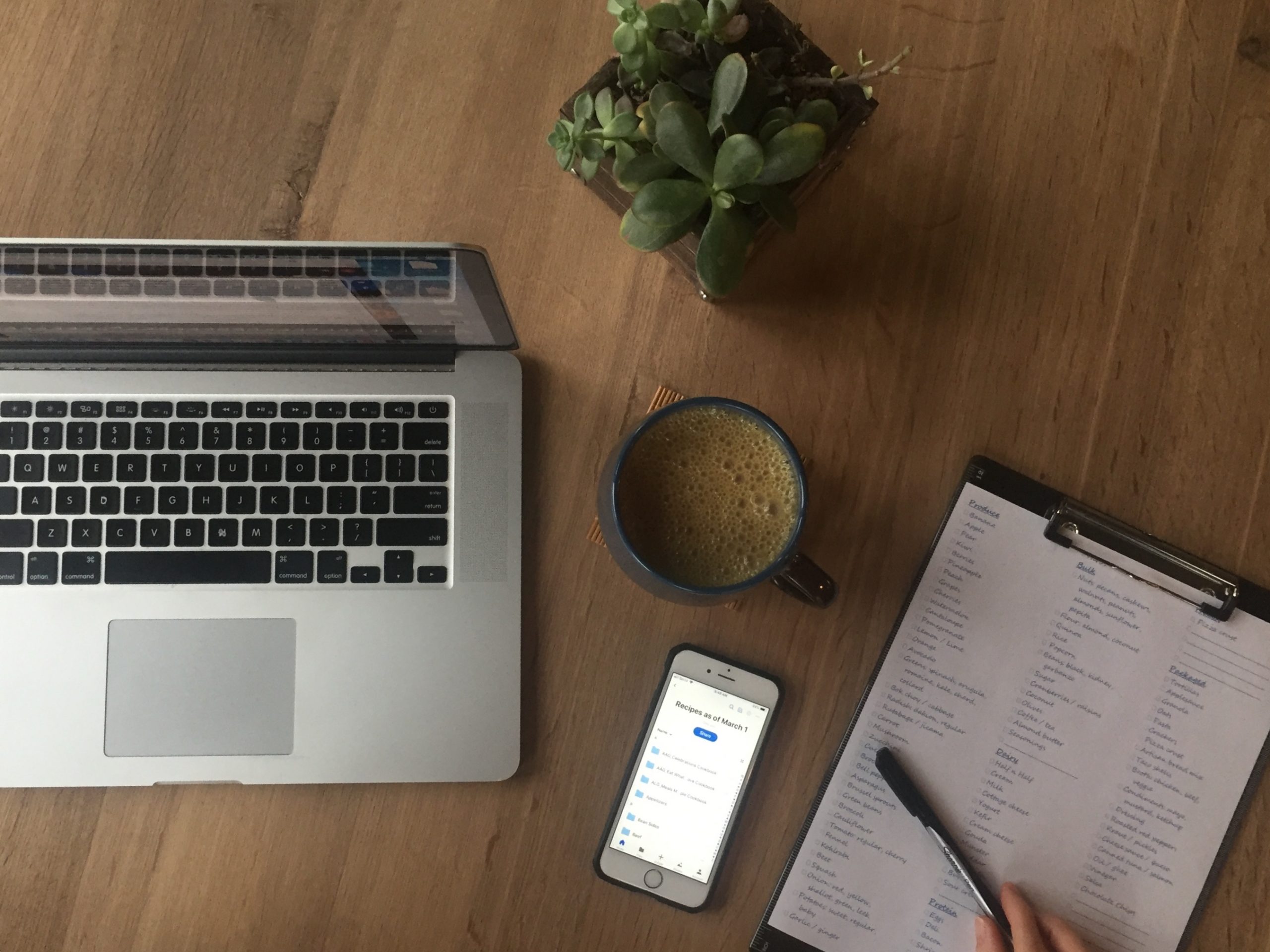I know there are some meal planners out there, but there are also a good handful of people that do not. My mom was always a meal planner so I grew up doing this, but have chosen to continue to do this in my adult life because I truly believe it is beneficial. It is honestly my key to dinner time survival and also keeping us on track and eating well week after week.
I am going to do a two part series on meal planning, beginning today. In this first article I will focus on the starting point: getting organized!
Four strategies for getting organized for meal planning:
1. Find a set day (or couple day window) that you can commit to meal planning and grocery shopping every week. This will help build routine. Then set reminders on your phone or write it in your planner so you don’t forget. I designate one day a week to plan meals, usually mid week and then go to the grocery store sometime Friday – Sunday.
2. Start building up a stocked pantry, fridge, freezer. This is vital to having quick on the go meals and allowing flexibility with meal planning because you have enough to pull together meals if needed. Some items to consider include:
- Pantry:
- Various grains and pastas, including maybe some convenience boxed rice mixes
- Beans
- Broths – chicken, beef, vegetable
- Vinegars and oils
- Produce: onion, garlic, potatoes
- Canned fish
- Dried spices
- Fridge:
- Condiments
- Eggs
- Dairy products like cheese, milk and butter (if you eat dairy)
- Freezer:
- Variety of proteins
- Frozen veggies
- Nuts and seeds (best to freeze to prevent oxidation)
- Previously cooked and frozen grains such as rice or quinoa
- Leftovers
3. Decide how to organize your recipes. My process is not simple, per say, but it works for me and my type A organized self :).
Here are my steps:
- I have a huge catalog of recipes from electronic sources over the years (blogs, websites, etc.). Each recipe is copied into a word document. They are all stored on a zip drive, organized in folders by food type (i.e. chicken, veggies, soup, breakfast, etc.). Any new recipes that I want to add to my zip drive I put in an email folder and make the word documents all at one time at a set-interval – this could be monthly or every few months.
- I have a folder on the zip drive called To Try that houses all the new recipes. In that folder is also a document that lists all those items by name, so at a quick glance I can see what chicken recipes, veggies sides etc. I have and want to try next, instead of looking through all the individual files in the folder.
- For cookbooks, I go through those and make a word document of recipes that I want to try within that book, so again it is viewable on one page and easy to review when planning meals.
- After we try something I go back and rate the food and add any comments on the word document so I remember for next time.
- Finally, monthly I go in (I set a reminder to do this) and move the latest updated version of all the folders to Dropbox, which is an electronic app. This app allows me to not only view the content anywhere, but also allows me to search easier (for example, entering chicken and it pulls up all my saved chicken recipes) than you can do on a zip drive. This is also what I use to view the recipe when cooking.
4. Finalize where you want to have the meals written out. I have a dry erase board in my pantry, but it started on a piece of paper. Sometimes I also simply jot them down in my phone. Do you need them in the open to remind yourself to stay on track?
There you have it – my top four strategies for getting organized to meal plan.
As with everything I say, it is a journey. You ARE NOT going to start out here, but maybe find one or two tips (or pieces of a tip) that you would like to implement and get started with. This process will grow as you find what works for you. For example, the zip drive process might seem too complicated and maybe you would prefer an app or a simple paper binder.
The goal is to find a process you can be successful with, not necessarily something I told you might work because it works for me. Tweak away!
The start up might seem overwhelming, but I promise it will be worth it. You will save time in the long run each week. This process will also allow you to be successful in having a better experience at the grocery store (because you are planned and ready), you will be enjoying home cooked meals (which is better for your health) and not wasting food (which is better for your wallet and the environment).
For those of you who want to give it a try – let me know how it goes. I don’t think you will regret it.
As part of my completely FREE eBook, you get a one week meal plan + so much more! Make sure to grab your copy and it will be in your inbox in minutes.!
PS – Did you see my 12 Meal Planning Strategies?

